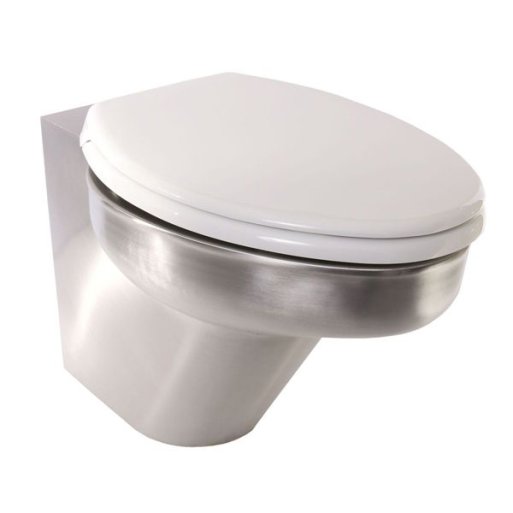Cleaning & Maintenance Of Stainless Steel Products
![]()
Washware Essentials recommends a regular cleaning schedule to ensure stainless steel products remain in perfect condition.
The term “stainless” is slightly misleading, unfortunately stains will occur on stainless steel if the products are not cleaned properly on a regular basis. Stainless steel is actually corrosion resistant due to the high levels of chromium rather than “stainless”.
One of the main reasons that customers encounter staining and rust coloured deposits on stainless steel products is down to a lack of regular and proper cleaning.
Cleaning Stainless Steel
We recommend that after installation the whole product is thoroughly washed down with a mild soap and water solution. Washing up liquid is the best mild soap product to use. This cleaning will remove any residue left from protective coatings, finger prints, installation dirt, and any airborne building site debris. The product should be rinsed off with clean water and dried with a soft lint free cloth.
We recommend that regular cleaning of the products should be incorporated into your normal cleaning schedule, the type of use and location of the product will dictate the frequency. Regular cleaning should be undertaken to prevent the build-up of dirt and staining. The whole product should be washed with a mild soap and water solution, rinsing with clean water and drying with a soft cloth.
For more stubborn dirt and stains that have built up a stiff bristle brush can be used with the soapy water. If this doesn’t remove the dirt then a fine synthetic nylon kitchen pad can be used, we recommend carefully rubbing this gently along the grain of the stainless steel with neat washing up liquid to lubricate the surface. This method should remove all normal everyday dirt and debris and leave your products with a clean surface that should be easy to maintain with regular cleaning. This method will also remove the brown stains that can sometimes look like rust.
Product Specific Cleaning
Stainless steel wash troughs generally stay fairly clean within the hand wash area due to the regular running of water over the surface. The other surfaces such as the ends, tap ledge and front often get wet due to splashing but are often overlooked during the regular cleaning routine, this can potentially lead to a build-up of dirt which if left un-cleaned will discolour and go brown, often looking like rust. Ensure the whole of the washing trough is cleaned including the ends, front and underside of the sink.
Stainless steel urinals should be cleaned thoroughly and regularly to maintain the finish of the stainless steel and reduce the risk of odours. The urinals are fairly good at keeping the flushed surfaces clean but the other surface can be subject to splashing. The whole of the trough urinal should be thoroughly cleaned with warm soapy water giving special attention to the areas that are not cleaned during flushing, such as the ends, front and underside of the trough and the top edge.
Cleaning Fluids
Expensive proprietary cleaners are not required for stainless steel and should if possible be avoided. In many cases the cleaners contain chemicals which are harmful to stainless steel and may cause irreparable damage. Care should be taken if using these cleaners that they are suitable for use on stainless steel and they don’t contain harmful chemicals.
Washware Essentials does not recommend that any cleaning products are used on stainless steel except warm soapy water, a stiff bristle brush, or the careful use of a synthetic fine grade kitchen cleaning pad. Bleach, bleach based products, anti-bac cleaners and sanitizer sprays may all contain harmful chemicals.
Bleach
Bleach or bleach based products which contain sodium hypochlorite should under no circumstances be used on or left on stainless steel products. If these products are accidently used on or spilt on stainless steel they will need to be thoroughly cleaned off immediately before irreparable damage occurs.
Stainless Steel Properties
Stainless steel differs from ordinary carbon steel by the amount of chromium present. Carbon steel will rust when exposed to air and moisture. Stainless steel does not readily corrode in normal environments with air and moisture present due to the higher levels of the chromium element. The chromium element forms a passive surface layer of chromium oxide on the stainless steel that blocks oxygen diffusion and surface corrosion, this also prevents corrosion in the metals internal structure. This surface layer is too thin to be seen, is smooth to touch, and quickly reforms if the surface is damaged or scratched.
There are three main types of stainless steel used in the products that Washware Essentials produces:
304 Grade has been traditionally the most popular and versatile used stainless steel and is sometimes referred to by its old name 18/8 which came from the material composition of 18% chromium and 8% nickel. 304 grade is a non-magnetic (austenitic) stainless steel which is ideal for pressed items such as catering sink bowls.
316 Grade contains the additional molybdenum element which gives the stainless steel a higher corrosion resistance than 304 grade. 316 grade is a non-magnetic (austenitic) stainless steel which has traditionally been popular for laboratory, medical and hospital products due to its higher performance. It is also specified for the more corrosive environments of sea sides and swimming pools.
441 Grade is one of the recent newer grades of stainless steel which has been developed for specific uses and to improve on grade 304. 441 grade is a magnetic (ferritic) stainless steel which has been developed specifically for catering equipment and to replace grade 304.
-
Posted by Paul Thorn
15th December 2017

 UK's Largest Stockholding
UK's Largest Stockholding Next Day Delivery Available
Next Day Delivery Available UK Mainland Delivery from £15
UK Mainland Delivery from £15 Minimum 1 Year Guarantee
Minimum 1 Year Guarantee